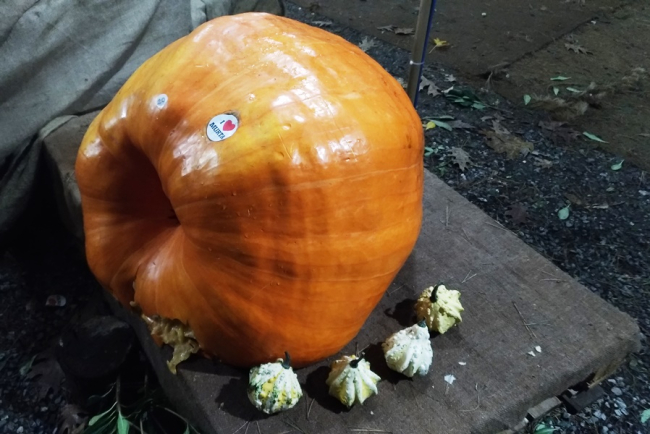34ª MOSTRA “DALLA A… ALLA ZUCC@
Murta: la zucca virtuosa diventa virtuale e va in rete.
Da sabato 7 a domenica 15 novembre solo online su www.murtaezucche.it
Murta, paese dell’entroterra genovese immerso nel verde, continua a mobilitarsi per il suo tradizionale tributo alla zucca organizzato in occasione delle celebrazioni per la festa di San Martino.
A causa dell’emergenza sanitaria la 34esima mostra “Dalla A… alla Zucca” si svolge esclusivamente online all’indirizzo www.murtaezucche.it. Non è quindi un caso che il tema prescelto sia “Murta: la zucca, virtuosa, diventa virtuale e va in rete". Anche per questa particolare edizione l’assessorato comunale al Commercio, Artigianato, Tutela e sviluppo delle vallate, Grandi eventi e Centro Storico ha supportato e coadiuvato il comitato organizzatore.
La manifestazione, allestita negli storici locali di Murta, viene inaugurata sabato 7 novembre alle ore 10.30 per concludersi alle 18 di domenica 15 novembre con le premiazioni. Seppur in versione digitale, verranno proposte attività singolari e interessanti, filmati e un'apposita pagina web dedicata ai lavori scolastici realizzati dagli alunni. Spazio, ovviamente, anche ai principali prodotti a base di zucca e video ricette che esaltano gli ottimi valori nutrizionali, associali alle numerose proprietà benefiche, che questo ortaggio ha per il corpo e la sua salute.
Anche quest’anno saranno premiate la zucca più grande, la più lunga, la più bella e la più strana; questi ultimi due riconoscimenti determinati dalle preferenze che, sino alle ore 12 del giorno di chiusura, i visitatori potranno esprimere sul sito ufficiale della manifestazione. Si tratta di premi dedicati a promuovere Genova e le sue eccellenze offerti da Palazzo Ducale Spa e dall’associazione Amici della Lanterna.
Oltre a promozioni sul web e sui social media, da lunedi 2 novembre la Mostra della Zucca di Murta è supportata da un’esposizione di pannelli fotografici dedicati a passate edizioni, allestita nel cortile di Palazzo Tursi e curata dall’assessorato al Commercio, Artigianato, Tutela e sviluppo delle vallate, Grandi eventi e Centro Storico.
Dalla sua prima edizione del 1987, la mostra “Dall’A… alla Zucca” ha aumentato la sua popolarità non solo a livello locale. Di anno in anno le zucche sono state inserite in un contesto espositivo che ha inquadrato personaggi, periodi storici e attività del territorio attraverso un’attenta documentazione abbinata alla ricerca di notizie curiose e di aspetti inconsueti. Nei suoi ininterrotti trentaquattro anni di vita l’esposizione ha “viaggiato” nel quattordicesimo secolo con Giovanni da Murta, il secondo Doge di Genova, e nel Risorgimento attraverso la figura della sorella di Giuseppe Mazzini che abitò a Murta. I suoi temi hanno riguardato anche i traffici commerciali sulla Via del Sale, la nascita delle linee ferroviarie lungo la Valpolcevera, Cristoforo Colombo e l’arrivo delle zucche in Europa ma anche la Luna o il dialetto genovese.
Per ulteriori informazioni:
- Email: info@murtaezucche.it
- Facebook: www.facebook.com/MostraZuccaMurta




